After 29 years of marriage and roughly that long living in the state of Texas, I found myself unhitched both romantically and geographically. To figure out where I should settle next, I decided to visit some places that always appear on those “Most Livable Cities” lists. I started with Asheville, in western North Carolina, which according to numerous reports, is bursting with fun things to do, innovative restaurants, great nightlife, tons of breweries, a robust art scene, and outdoor activities galore.
NextTribe is welcoming a small group to Asheville in April to see it like a local–since our founder Jeannie Ralston is a local now. Find out more here.
I ended my search in Asheville as well. Once I’d spent a few days in this city of 94,000 in the middle of the Blue Ridge Mountains, I decided I didn’t need to visit anywhere else. Not only is it about an hour from my family in the Great Smoky Mountains, but I was also completely taken by the city’s beauty and relaxed charm. I’ve now settled here and have been busy sampling the best of everything Asheville has to offer. So pardon my hubris, but I consider myself an expert and I’m happy to help potential visitors figure out all the great ways to fill an Asheville vacation.
Why is Asheville So Famous?

The short answer is “Vanderbilt.” The more complete answer is that the Asheville area has long attracted people—even Native Americans who lived in what was then Cherokee Nation. The spot now occupied by Asheville served as a crossroads of Indian trails surrounded by mountains and rivers on all sides.
With the Vanderbilt seal of approval, Asheville began to attract even more of the country’s elite.
The likes of Daniel Boone and Davy Crockett came through Asheville when it was a frontier outpost, but its star didn’t really start to rise until the coming of the railroad in the 1880s. People from the sweltering regions of the South could make their way to the city, which has an elevation of 2,200 feet and tends to stay cool even during the height of summer. Asheville and Buncombe County became a resort and therapeutic health center, an ideal mountain escape.
Among those drawn to Western North Carolina was George W. Vanderbilt, a New Yorker, who in the 1880s purchased 12,000 acres of land along the French Broad River. He enlisted the architect Richard Morris Hunt and the landscape architect (of NYC’s Central Park fame) Frederick Law Olmstead to build his dream house—the Biltmore Estate, which was and still is the largest privately-owned house in America.
With the Vanderbilt seal of approval, Asheville began to attract even more of the country’s elite. Many stayed at Biltmore, as guests of the Vanderbilt family, but starting in 1913, they were likely to be found at the Grove Park Inn, which has welcomed a long list of luminaries, including Henry Ford, Thomas Edison, John D. Rockefeller, F. Scott Fitzgerald, and an assortment of presidents. The Grove Park is a remarkable example of Arts and Crafts style architecture made of slabs of granite quarried nearby and featuring fireplaces large enough to walk into.
Together, Biltmore and the Grove Park Inn put Asheville firmly on the map as the finest mountain resort east of the Mississippi River.
Read More: 11 Things to do in the Charleston Historic District
What Do People Usually Go to Asheville For?
Though it is no longer considered a “health resort” per se, Asheville remains a hub for visitors who want to enjoy the mountains and all they have to offer—hiking, biking, white-water rafting, horseback riding.
It has also emerged as an arts center, sometimes being referred to romantically and maybe optimistically as the “Paris of the South.” Its arts tradition can be traced to the craftsmen brought to Asheville to build the Biltmore and the Grove Park Inn. Plus, it has long been filled with and surrounded by people who were “makers,” long before that term held any cachet. In 1930, the Southern Highland Craft Guild chose the city as the site of its headquarters. Weavers, ceramicists, and artistic innovators can be found at nearby Black Mountain College, the John C. Campbell Folk School and the Penland School of Crafts.
Asheville is sometimes referred to romantically and maybe optimistically as the “Paris of the South.”
Most recently, it has earned the nickname “Beer City,” thanks to the countless micro-breweries throughout the area and some not-so-micro facilities. Two famous western breweries have chosen Asheville for their East Coast headquarters and built extraordinary campuses for brewing beer and entertaining the public.
Best Neighborhoods of Asheville to Visit
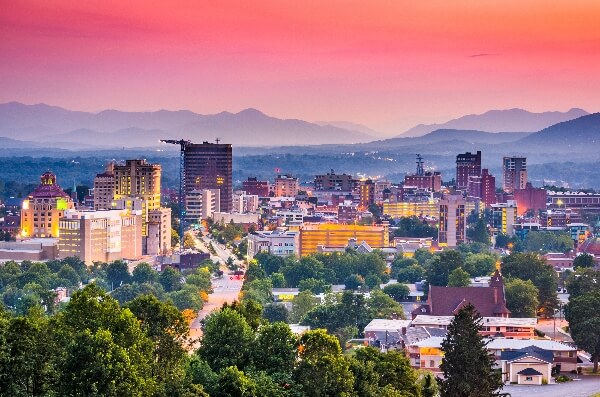
As it gets more publicity in media such as Forbes, U.S. News, and Travel & Leisure, Asheville continues to grow in both reputation and size. The metro area continues to spread in all directions, but for visitors there are four main areas to keep in mind.
Downtown Asheville, including the River Arts District. It’s not a large downtown area, but it packs a punch, filled with Art Deco buildings, art galleries, inviting bars, and nationally recognized restaurants and boutiques that offer sophisticated wares and items that reflect the Appalachian character of the region.
West Asheville is the slightly edgier part of town—Brooklyn to downtown’s Manhattan. Along Haywood Road, the main thoroughfare, you’ll find James-Beard-Award winning restaurants next to tattoo parlors and dive bars. All of which makes it particularly fascinating.
Five Points, Montford and Grove Park are found just north of downtown Asheville; a wonky intersection that has given the area around it the name Five Points. From here and farther north to the Grove Park Inn are neighborhoods with superior examples of Arts and Crafts homes, plus shops and restaurants that cater to local residents, but are under-the-radar gems.
South Asheville and Biltmore Village are worth exploring, too. South of downtown is the charming, leafy Biltmore Village, which was created to house employees of Biltmore Estate. The Tudor-style buildings are now home to shops and restaurants, and the anchor of the neighborhood is the Cathedral of All Souls, a Romanesque Revival landmark.
Is Asheville Cheap to Visit?
Cheap or expensive is all relative. Asheville is much cheaper than major cities such as New York, Chicago, and Los Angeles. But because it’s such a desirable place to visit, prices for meals and lodging are higher than you’d find in a non-hot city. Expect to pay in the $50-a-person range for dinner in a downtown restaurant (more, depending on how much alcohol you drink). A night at a downtown hotel will run you $200 at the low end.
Free Things to Do in Asheville
One of my favorite free things in Asheville is a walk or bike ride through the beautiful French Broad River Park. A tranquil walking trail hugs both sides of the river, and you can make a loop by crossing bridges at Amboy Road and Hazel Mill Road.
Every Friday night in the rounded outdoor amphitheater of downtown’s Pritchard Park, people join together to play thundering sounds on the drums, dance to the powerful rhythms, or just sit back and enjoy the show, known as the Drum Circle.
One of my favorite free things in Asheville is a walk or bike ride through the beautiful French Broad River Park.
Free music is available in many other spots in downtown or West Asheville—even in front of the Whole Foods near Five Points. This is a busker city, and some of the musicians are extraordinary. A classically trained violinist I met recently told me he prefers to work the street corners over playing in a formal setting.
It costs nothing to roam the River Arts District and catch artists busy at their craft. You can see all sorts of creative sorts—from woodworkers to collage artists to painters (see below).
If you can’t get out to the mountains but want to take in some of the area’s stunning natural beauty, head to the Asheville Botanical Gardens. Paths wend along a lovely stream, which is crossed by a picturesque arched bridge.
What’s Going on in Downtown Asheville?
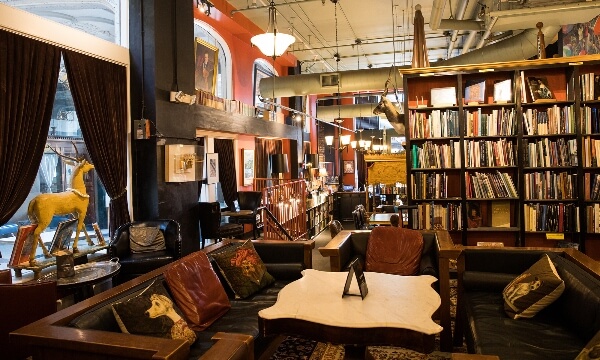
These are the places I like to visit regularly and definitely on the agenda when I have friends visiting.
Grove Arcade
The Grove Arcade was the (very elegant) forerunner of shopping malls. Built in 1929 by E.W. Grove, who also is responsible for the Grove Park Inn, the arcade takes up a whole city block and is adorned with architectural flourishes such as winged lions, spiral staircases, and skylights. It was renovated in 2002 to the glamourous state you’ll find it in today.
Battery Park Book Exchange and Champagne Bar
Locally known as the Champagne Book Bar, this Asheville must-visit is an airy two-story store with elegant tables among the book stacks. Light meals are served, and live music is often wafting through. “Come for the books; stay for the bubbles,” is the bar’s motto.
Basilica of St. Lawrence
Any city worth its salt features an impressive church or two, and Asheville has the Basilica of St. Lawrence, a lovely domed structure built in the Spanish Renaissance Style in 1905. Step inside to take in the glory of the truly sensational stained glass windows.
Thomas Wolfe House
The statuesque Victorian house on East Market Street was once the Old Kentucky Home boarding house, run by Julia Wolfe, the mother of literary legend Thomas Wolfe. The house figures large in Wolfe’s classic Look Homeward Angel as the fictitious Dixieland. Bibliophiles will love seeing the building that inspired one of Asheville’s favorite sons.
Rooftops have become sought-after real estate for bars in Asheville, all the better to take in a mountain vista.
Capella on 9 Rooftop Bar
Rooftops have become sought-after real estate for bars in Asheville, all the better to take in a mountain vista. Of all that I’ve visited, the Capella on 9, part of the AC Marriott Hotel downtown, is my favorite. Fat lounge chairs and elegant fire pits make this a sumptuous spot to chill out.
Citizen Vinyl
If you feel there’s something missing from modern music—namely, something to hold in your hands—then you’ll love visiting Citizen Vinyl. In a building on O’Henry Avenue where newspaper presses once ran night and day, you can see machinery press vinyl records. Yes, grooved discs just like the ones you used to cherish. But this isn’t all show. Like any good Asheville business, visitors can have a coffee or a drink while they slip into nostalgia.
Malaprop’s Bookstore
Asheville City Hall (which is, by the way, an Art Deco masterpiece) sits on College Street, but the true center of the city is a few blocks away: Malaprop’s Bookstore. I had the honor of doing a reading at this well-known independent bookstore on the book tour for my memoir, and the vibe was sizzling. “Malaprop’s was the heart and soul of Asheville, NC, when Asheville was a sleepy little hippie town,” author Ann Patchett wrote recently in the New York Times. “And it’s still the heart and soul now…a position Malaprop’s maintained by being unabashedly true to itself.”
French Broad Chocolate Lounge
There are a slew of cocktail lounges in downtown Asheville, but only one Chocolate Lounge. The chocolate is all made in a nearby factory and takes the form here of bon bons, brownies, truffles, and more. Splurge on a salted caramel and chocolate tart or an espresso cheesecake or a chocolate crème brulee. “The Tiffany’s of Chocolate,” an ecstatic reviewer on Tripadvisor proclaimed.
Wake Foot Sanctuary
After walking the charming blocks of downtown Asheville, your feet will need some pampering. Thank God then for Wake Foot Sanctuary, which specializes in soaks in copper bowls so large you may wonder if you’re going to be part of a soup. Shoulder and scalp rubs can be added on to send this into divine territory.
Where to Eat in Downtown Asheville

Here are some of my personal favorites if you’re looking for great places to eat in Asheville:
Curate
I’ve been to many Spanish tapas restaurants, but the James Beard award-winning Curate is the only place I’ve had black paella.
Rhubarb
When I was looking for a house to buy in Asheville, I would reward myself after a long day of real estate viewing with dinner at the spectacular Rhubarb. The menu, created by a chef who is regularly recognized by the James Beard Foundation, features down-home Appalachian specials such as Hoppin’ John and Crispy Hominy.
When I was looking for a house to buy in Asheville, I would reward myself after a long day of real estate viewing with dinner at the spectacular Rhubarb.
Asheville Proper
The star of the show at Asheville Proper is its custom-built hardwood-fueled grill, which means the whole place smells beyond delicious. The charred, smoky steaks and chops are not to be missed.
Strada
This downtown family-owned favorite, Strada, has all your Italian favorites: a great Caesar salad, arancini (those yummy fried rice balls), hand-tossed pizzas, Chicken Piccata, and more.
Tupelo Honey
Having grown up in the South, I feel completely at home with the menu at Tupelo Honey. Shrimp and grits, fried chicken, fried green tomatoes. Yum. Tupelo Honey now has restaurants across the country, but it all started here on College Street.
Chai Pani
Incredible Indian street food is among the options at Chai Pani. Spicy chaat, okra fries, kathi roll sandwiches, and other delectable fare.
Benne on Eagle
Whether you go for brunch (chicken and waffles, mushroom toast, and more) or dinner (don’t miss the prawn and collard green gumbo), you will eat very, very well at Benne on Eagle.
West Asheville: The Edgy Part of Town

I once thought I wanted to live in the middle of the action in downtown Asheville, but that was before I discovered West Asheville. I ended up in one of the many bungalows in this part of town that is within easy walking distance of colorful, iconic eateries, vintage shops, coffee shops, and alternative medicinal and body treatment centers.
The best and brightest entries on the Asheville dining scene are no longer limited to downtown. Some of the most innovative restaurants can be found in West Asheville. A few steps from my home is Neng Jr., the Filipino restaurant (actually, they refer to it as Filipinx and proudly embrace their LGBTQIA+ customers and staff) that The New York Times and Bon Appetit have both put on the best of the U.S. list. It’s so small and in such demand, I haven’t been able to get in yet, but I can’t wait to try the adobo oysters and pork belly pulled noodles.
The best and brightest entries on the Asheville dining scene are no longer limited to downtown.
Across the alley from Neng Jr. is an outpost of Chai Panni downtown. Botiwalla serves some of the best Indian food I’ve ever eaten—shout out to the sigris, grilled flatbread wraps—in a casual setting.
On a snowy evening when driving to a downtown restaurant didn’t make sense, my partner and I walked to the Admiral and were wowed by its warm, bourbon-y atmosphere and the menu, including the scallops in a beurre blanc.
On weekends, West Asheville fills up with drowsy crowds in search of coffee and breakfast. There are three good reasons they come here: The Sunny Point Café, Biscuit Head, and Early Girl. Sunny Point Café serves up comfort food like sausage and cheese French toast and grit-cake tostadas. Behind the restaurant is a garden where the staff harvests fresh ingredients for specials. Just down the road is Biscuit Head, which specializes in not merely biscuits, but “cat head” biscuits. Those are biscuits as big as cat heads and as scrumptious as any biscuit you’ll find in the South. Early Girl offers a healthy twist on diner food.
If you come to West Asheville looking for a drink, you’re in luck. Bars abound–from the cheeky Golden Pineapple, in one of Asheville’s oldest buildings, to Universal Joint, housed in a white cottage from the 1930s that used to be a Pure gas station, to the super-sophisticated Leo’s House of Thirst, which normally has a bonfire going out front. Even a modern Shell gas station has a beer garden out back, and a barber shop features taps on the wall.
To pick up a little something to remind you of your Appalachian holiday, head to Provision Mercantile for locally-made artisan products and eclectic offerings that blend nostalgia and contemporary craftsmanship. Whist sells clever gifts and trinkets (I bought a slew of goofy fridge magnets).
North Asheville: The Grove Park Inn and More
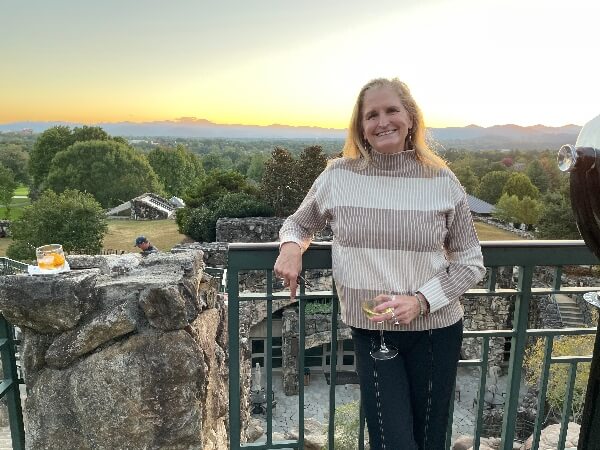
When guests come to town, I always start their visit off with a sunset cocktail at the Omni Grove Park Inn. The grandeur of the building is a formidable match for the grandeur of the mountains to the west. Every evening, eager looky-loos bearing cocktail glasses gather on the multi-level terrace that spills majestically down the slope.
If you like your music served up with a dose of competitiveness, you’ll want to check out Elaine’s Dueling Piano Bar. The stage is set with two massive white grand pianos facing each other, and the pianists go after each other in virtuoso style—except when they’re cracking jokes.
The grandeur of the building is a formidable match for the grandeur of the mountains to the west.
The Grove Park Inn is the main attraction in this part of town, but there are plenty of other jewels here. Just down the hill is Grovewood Village, built to house the weaving and woodworking operations of Biltmore Industries, a force in American craft and textiles that was co-founded by Edith Vanderbilt. Today, the 11-acre compound with its cottages that look right out of a storybook is home to art galleries and studios, two museums (see below) and Eldr Restaurant.
At the base of Sunset Mountain (where the Grove Park sits) runs Merrimon Avenue, where you’ll find an assortment of restaurants and shops. I like to bring visitors with a meat craving to Luella’s BBQ—even though I don’t eat meat. Along with the (reportedly) scrumptious Brunswick Stew and pulled free-range chicken are vegetarian-friendly dishes such as BBQ baked potatoes and something called Smiling Harah BBQ Tempeh.
On the other end of the culinary range is Homegrown, a locavore restaurant with the tagline “slow food right quick.” I’m a sucker for their trout cakes with cheesy grits. And a new entry on the North Asheville eating map is Little D’s, run by the same couple who operate the acclaimed Asheville Proper downtown. According to the website, Little D’s “wanted to create an inviting and easygoing space just for locals…away from the hustle and bustle of downtown.” So shhhh! This is our secret.
Is the River Arts District Worth Visiting?

Kudos to Asheville for taking a derelict stretch of warehouses along the train tracks and the French Broad River and turning it into a beloved destination for visitors and locals.
The River Arts District is comprised of an array of galleries and studios in 23 former industrial buildings. The district is known for being more than a place to see finished pieces hanging on wall or tucked in a shelf; this is where you can see more than 200 painters, potters, glass artists, collage artists and more busy at their work. You never know what you’ll see, which makes it worth visiting again and again.
The River Arts District is where you can see more than 200 artists busy at their work.
Bonus: My beau has recently set up a studio in Trackside Studios. Mike Floyd paints baseballs by hand, adding vibrant, detailed graphics that make them one of a kind. If you’re in the area, give him a big shout.
What Is the South Slope in Asheville?
Think of the South Slope as the in-between land, the bridge that connects the downtown with the River Arts District. There is a spillover of art galleries and studios here, plus breweries galore. I also like the microdistillery The Chemist and the nextdoor cocktail bar, the Antidote. If I’m craving hard cider, the apple of my eye is Urban Orchard.
Also, look for street art here. Every Asheville neighborhood has its share of colorful murals but the South Slope is especially well-covered. There’s hardly a bare wall to be found, and much of the work boils over with exuberance.
Tips for Seeing Biltmore Estate

The first time I saw the Biltmore Estate, I was about eight years old, and the impression it made changed the way I thought about my home region of Appalachia. I was aware—probably because of The Beverly Hillbillies—that people from the mountains were considered to be poor and backward. But here was this magnificent estate, grand on a scale I had never imagined, one hour from my hometown.
Subsequent visits to the Biltmore have been fascinating, but never quite as jaw-dropping as the first one.
Still, here are some things to know to make your own visit to this unmissable estate filled with more fun, more awe.
- Buy your tickets in advance. They sell out, especially on weekends and during peak summer season. You don’t want to get to Asheville and then find out you can’t see the city’s number-one tourist attraction.
- Plan on spending at least six hours here, all day if you have the time. Did I mention that the place is huge? It’s 175,000 square feet, which is more than four acres of floor space. There are 250 rooms—35 bedrooms, 43 bathrooms, 65 fireplaces. (But not every square inch is open to the public, of course.) This doesn’t even include the outbuildings, many of which are now shops and restaurants or just delightful jewels on the landscape.
- The operative word in Biltmore Estate is “estate.” This means there’s so much more to see than the house. Adjacent to the house is 75 acres of formal and informal gardens, plus 22 miles of trails to explore. “It’s like having a private national park to explore right here in Asheville!” an article about Biltmore said.
- Make sure you get to the Library and South Terraces, the best place for photos. The view over the gardens is of an impressive stand of purple mountains. Makes you wonder if the person who wrote “America the Beautiful” had this in mind for some of the lyrics.
- Don’t forget to visit Antler Hill Village. Many people stop here for the winery, but I like the Barn and Farmyard. In the barn, you’ll see demonstrations by blacksmiths, woodworkers, and other craftspeople, plus you’ll have a chance to play games from the turn of the last century. If you get to the farmyard in the spring, there’s nothing more entertaining than watching baby goats frolic.
What Is There to Do Near Biltmore Estate?
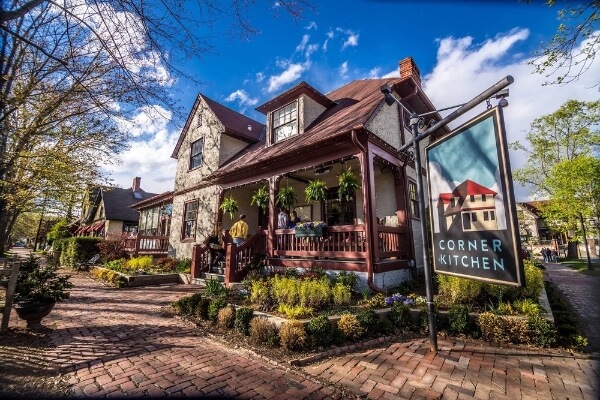
When I’m in the Biltmore area—especially in winter—I like to stop in at the Grand Bohemian Hotel, which has the décor and feel of a hunting lodge, for a hot toddy by one of the roaring fires. A stroll through the Tudor-style Biltmore Village reminds me of being in a small New England town. Even though many of the shops are chain stores—Talbots, J. Jill, Lilly Pulitzer—there are enough local boutiques to give it an Asheville accent.
The king daddy of all the antique shops in town is the Tobacco Barn.
Also close by and well worth visiting are the string of antique stores along Swannanoa Road. The king daddy of them all is the Tobacco Barn, which features 75 dealers spread over 77,000 square feet. It’s truly the largest, most enchanting collection of antiques in the area. Farther down the road is Atomic Design, which specializes in mid-century modern. Other good bets: Altamont Vintage, Miller’s Crossing, and The Regeneration Station.
Breweries in Asheville

Here’s my opinionated list of the best spots in Asheville:
This brewery, based in Fort Collins, Colorado, has opened up an airy, expansive operation on prime Asheville real estate: right on the banks of the French Broad. This is an ideal spot to while away an afternoon. There’s a large outdoor seating area overlooking the rushing waters of the river. Food trucks are always in attendance, offering great snacks. There’s often live music. All easily accessible from all parts of town.
I’m not sure what I was expecting, but it wasn’t the level of splendor that I found.
The California brewery chose Asheville for its East Coast operation and set up shop outside of town, not far from the airport. I stopped by with a visiting friend since we had time to kill before his flight. I’m not sure what I was expecting, but it wasn’t the level of splendor that I found. The assortment of beautiful brick-and-stone buildings seems like something from the era of the Biltmore or from an high-end winery. The compound includes an indoor restaurant, an open-air amphitheater, and a venue, where bands regularly play.
This is the jewel of Asheville’s brewing scene. Upon opening their original brewpub location in 2012, Wicked Weed was known for pushing the envelope in craft by offering 25 unique draft beers including West Coast style IPAs, barrel-aged sour ales, and more. Now, it has four locations in Asheville including three taprooms and a fine dining restaurant.
Founded in 1997, Green Man is one of the oldest breweries in the city. Recently moved into a three-story, 20,000 square foot building with a packaging hall, this “brewtique” and its indoor/outdoor top floor taproom overlook production and the Blue Ridge Mountains.
RE have constructed
This funky, boundary-pushing brewery offers an incredible array of brews to sample, from delicate, barrel-aged saisons to clean IPAs with clever names like Commitment Phobia.
At Cellarest, you’ll find an interconnected taproom, garden, and brewhouse, all of which share a story of sustainability (yes, learn about bioprospecting ingredients) and delicious beer.
Several years before I moved here, I was in town for a wedding and I visited the Thirsty Monk with my older brother, who had read all about its charms. Thirsty Monk, named one of the best beer bars in the world by multiple publications, features three floors, with each developed for a different form of fun. You’ll find the Top of the Monk Cocktail Bar, Holy Water Hard Seltzer Brewpub, and the Delirium Belgian Bar. He was in heaven, I do believe.
Hi-Wire Brewing (River Arts District)
This 25,000-square-foot complex includes nine converted shipping containers transformed into indoor-outdoor seating and covered with cool murals. Find a seat and enjoy a Strongman Coffee Milk Stout or a Mountain Water Citrus Splash or anything in between.
A chill, dog-friendly spot to relax and sample creative beers, like the Carolina Fog Hazy IPA and Blackberry Zombie White Ale.
Museums in Asheville
Here’s where to get your dose of art:
This museum pushes back on the “hillbilly” stereotypes within the “Land of the Sky” and shares many amazing facets of the region. I love that the museum is located in the Smith-McDowell House, which dates to 1840 and is the oldest surviving structure in Asheville. Second, the museum itself is really well done, giving a well-rounded and inclusive story of our region. It has excellent traveling exhibits, like the one on Raphael Guastavino, the Spanish master builder and architect whose tile work can be seen at The Biltmore and the Basilica of Saint Lawrence.
Citizen Vinyl and the Pinball Museum feed your nostalgic cravings.
Who else remembers when the Moog synthesizer became all the rage in popular music? I sure do. Donna Summer’s “I Feel Love” was one of the hits that introduced the world to its hip-shaking potential. The Moogseum, located at 56 Broadway Street in downtown Asheville, NC, is the cornerstone of the Bob Moog Foundation, where you’ll find immersive, interactive exhibits about his pioneering musical legacy.
Part of Historic Grovewood Village, where there’s loads to explore, is this haven for car buffs. You can ogle everything from a 1913 Tin Lizzie to a beautifully polished antique fire truck to a quintessential 1950s Cadillac.
Biltmore Industries Homespun Museum
Also located at Grovewood Village, this small museum shares the history of Biltmore Industries which started as a crafts program and grew to become one of the biggest handwoven-wool producers on the planet.
Along with Citizen Vinyl (above), the Pinball Museum can feed your nostalgic cravings. The place is filled with vintage pinballs (Elton John as Captain Fantastic, the Creature from the Black Lagoon) and arcade games (let’s hear it for Pacman), plus memorabilia, such as boomboxes, from eras past.
Towns to Visit Near Asheville
As terrific as Asheville is, it’s not the only game in this part of Western North Carolina. Nearby—and more nestled into the hollows and ridges of the mountains—are a constellation of small towns that have a bit less hipness but a full dose of warmth.
Brevard
There is a feeling of Mayberry here, probably because an adorable diner with that name is at the heart of the town.
I came across my favorite small town in the Blue Ridge Mountains after I’d finished a hike along the Blue Ridge Parkway (to Sam’s Knob) and decided to take a scenic drive home. The downtown is packed with quaint old buildings that have been taken over by coffee shops, antique stores, and the like. There is a feeling of Mayberry here, probably because an adorable diner with that name is at the heart of the town.
Black Mountain
I have fond memories of a lovely weekend I spent during my college years at a camp near Black Mountain. There wasn’t much in the town, but the surrounding area was breathtakingly gorgeous. Today, however, the town is almost as much of a reason to visit as the mountain scenery. The original home of the renowned Black Mountain Arts College, there are loads of great galleries, fantastic indie shops, and wonderful bistros and cafes. Of course, the mountains are still there if you’re ready for a terrific hike and picnic.
Waynesville
Located in the famous Blue Ridge Mountains, Waynesville is a special spot for nature-lovers. You can spot elk in the Cataloochee Valley, and hike, bike, run, or stroll to your heart’s content. Then, hit the downtown area with its antique, jewelry, craft, clothing, and home goods shops. Plenty of great places to eat, too.
Burnsville
Burnsville is quite literally on the map thanks to Mt. Mitchell, the highest peak east of the Mississippi. But other than its scenic mountain location, you’ll also find Instagram-worthy murals on the main street, plus artists’ and craftspeople’s studios to visit–and to shop.
What to See Along the Blue Ridge Parkway near Asheville
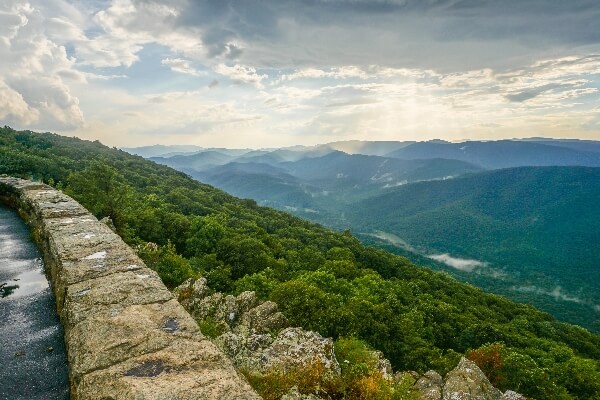
When you go for a country drive in Asheville, you have at your disposal a road built specifically to showcase Appalachian culture and the most stunning landscapes in the country. The Parkway, opened in 1966 and stretching 469 miles, to the southwest in Cherokee, NC, right on the border of the Great Smoky National Park. Travel northeast on the parkway for three hours, and you’ll come to Blowing Rock, one of my favorite places to visit when I was growing up.
Every few miles there is a look out where you can stand in awe of the Appalachians.
When you drive in either direction, you’ll see that every few miles there is a look out to stand in awe of the Appalachians. The only problem is deciding which ones to stop at. You can’t pull in to every one or you’d never make any progress. But rest assured that they are all stunning in their own way. You cannot go wrong.
Also, along the parkway are trailheads that lead deep into the forest or along ridges for higher, more private vistas. If you drive north from Asheville, you will find a couple of dining options close to the parkway, including the Switzerland Café (in Little Switzerland, NC). But a better idea is to pack a picnic for a day of easy rambling on one of America’s great roads.
Where to Stay in Asheville
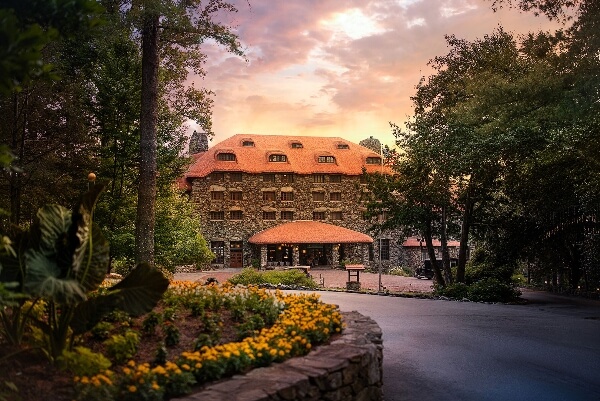
As founder and CEO of NextTribe, which leads trips for women around the globe, I have to put on my “Hotel Expert” crown here and recommend:
I’ve already mentioned above how much I love this stunning, century-plus-old place. If you don’t book a room, at least come for a drink.
On our April 2024 visit to Asheville, our guests are staying at this stylish spot that once produced the steel to build the Biltmore Estate.
On our visit to Asheville in April 2024, our guests are staying at this stylish spot that was once, as the name implies, a foundry, one that produced all the steel needed for the Biltmore Estate. Appropriately, the hotel has an industrial vibe, with lots of exposed brick walls and metal work. Soft touches of art and pops of color warm up the décor and heighten its sophistication.
Located in the Biltmore Village area, this posh hotel has a British hunting lodge feeling. There’s an on-premises art gallery to wander through, and a full-service spa offering all kinds of hydrating treatments.
In Asheville’s lively downtown, the iconic vintage Bon Marche building has been transformed into a fab pet-friendly hotel. Check out the rooftop bar for Cuban-inspired cocktails and food.
Being a curious sort, I popped my head into the lobby of The Radical just before its opening and was awed by the art going on the walls, the grand chandeliers and the riot of color that permeates the place. The name Radical comes partly because it’s located in the River Arts District (a.k.a. RAD) and because it’s a perfect description of the hotel’s marriage of luxury and badassery.
Wherever you stay, and whether for a weekend or a week, you won’t run out of amazing adventures in my new hometown!
Read More: Things to Do in the West Village: A New Yorker’s Best Ideas

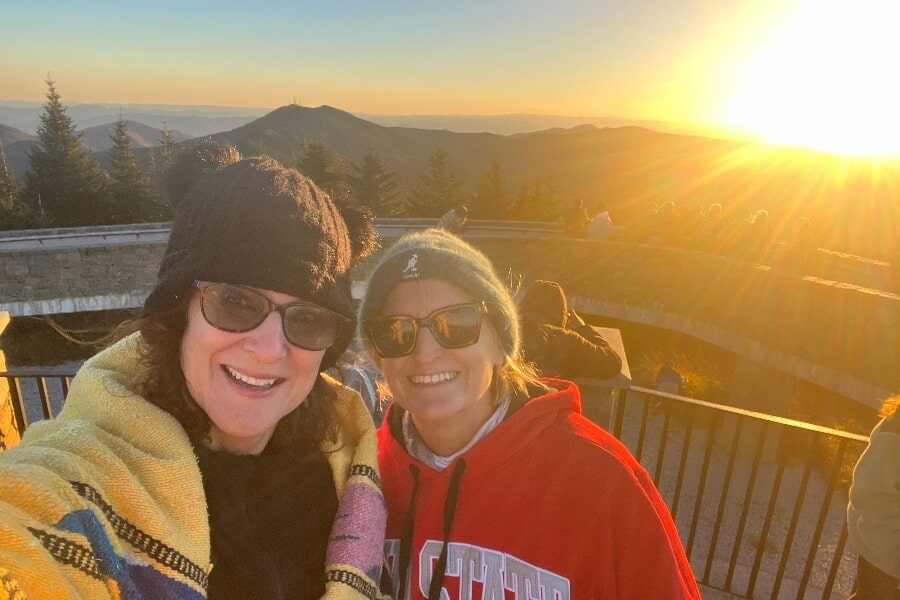


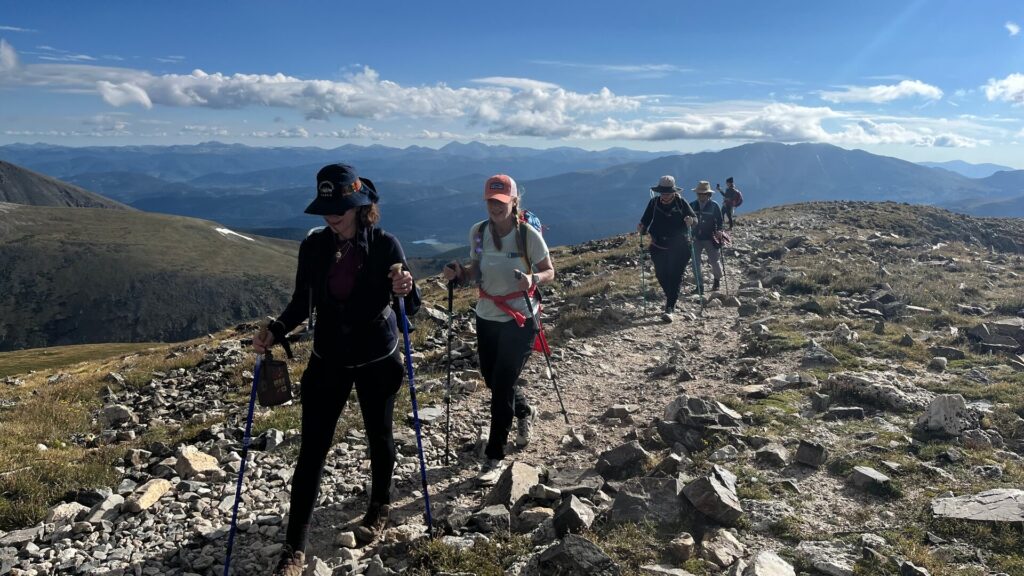


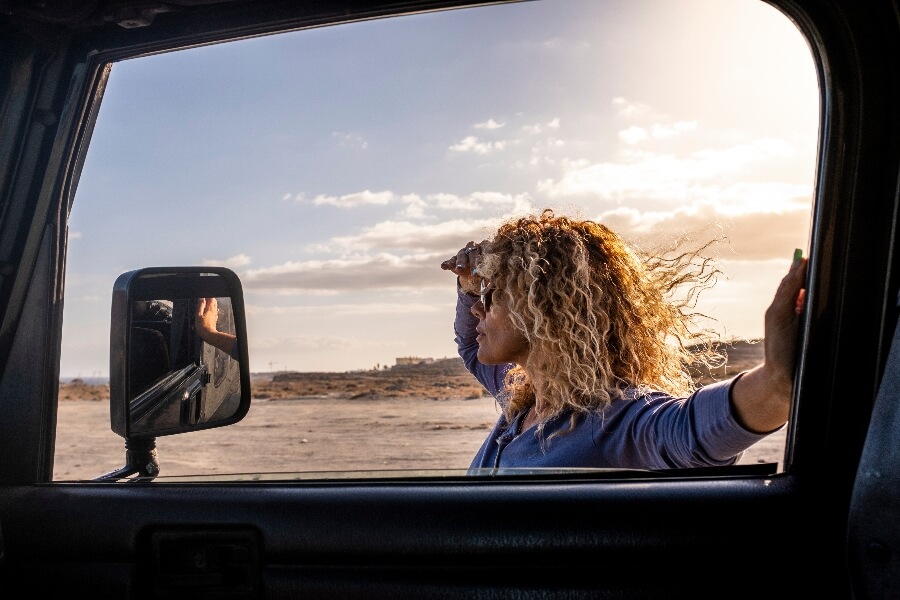

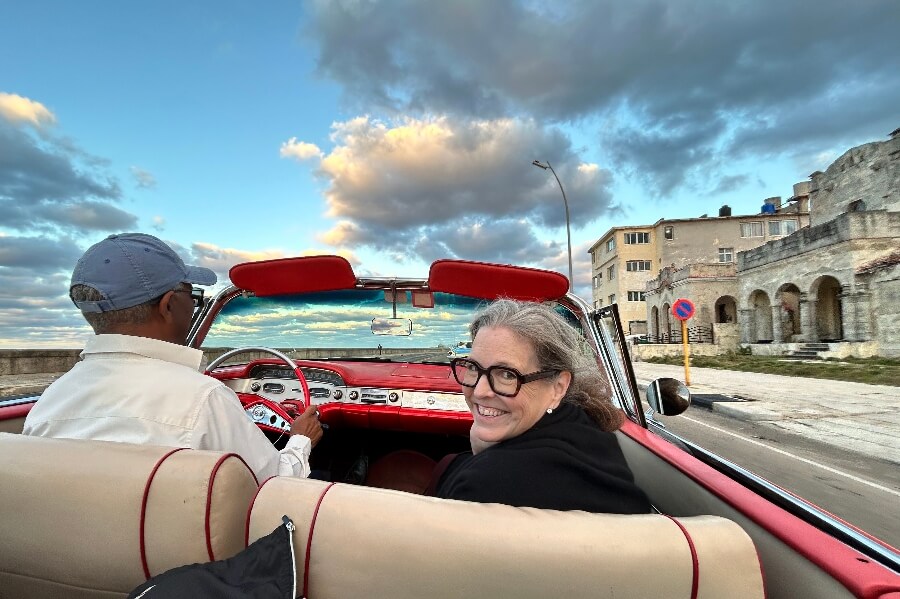
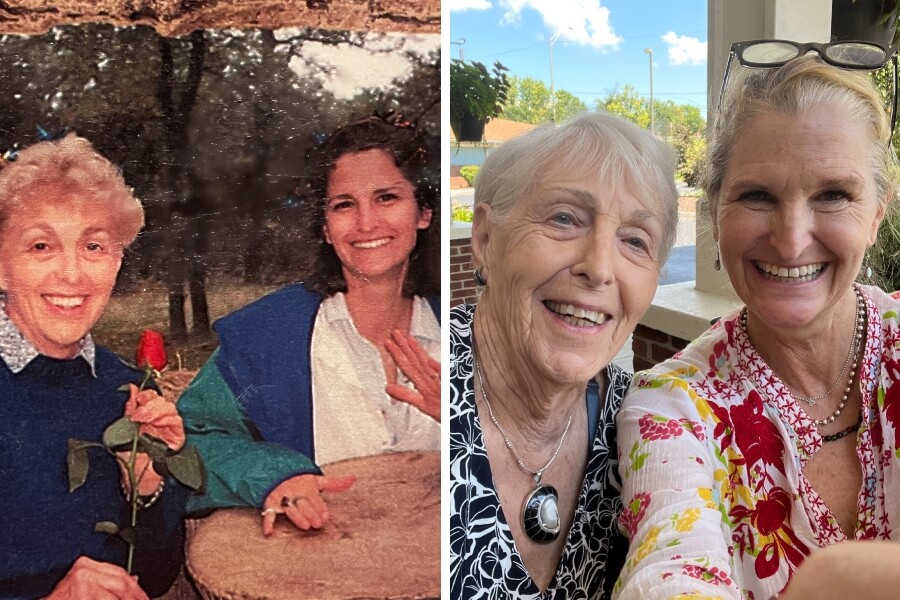

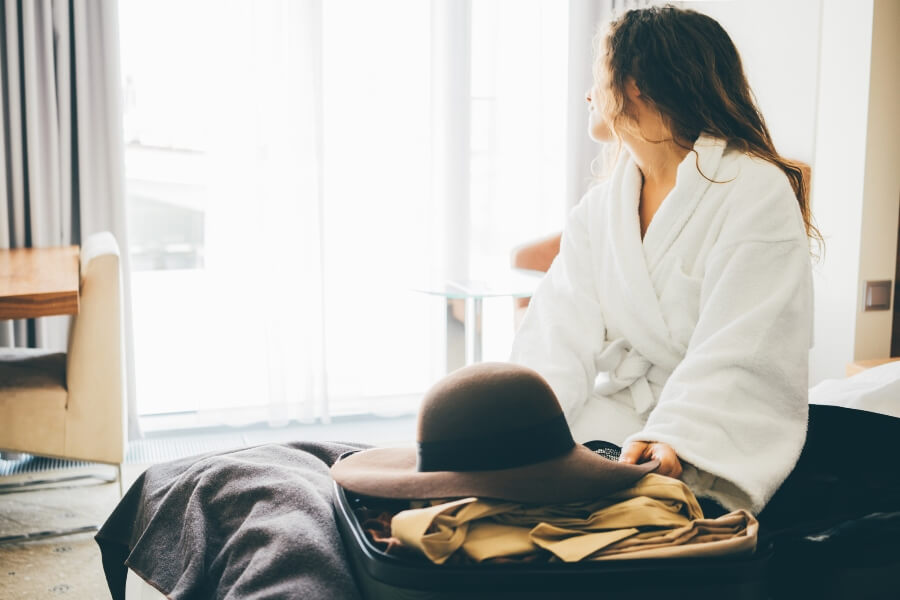
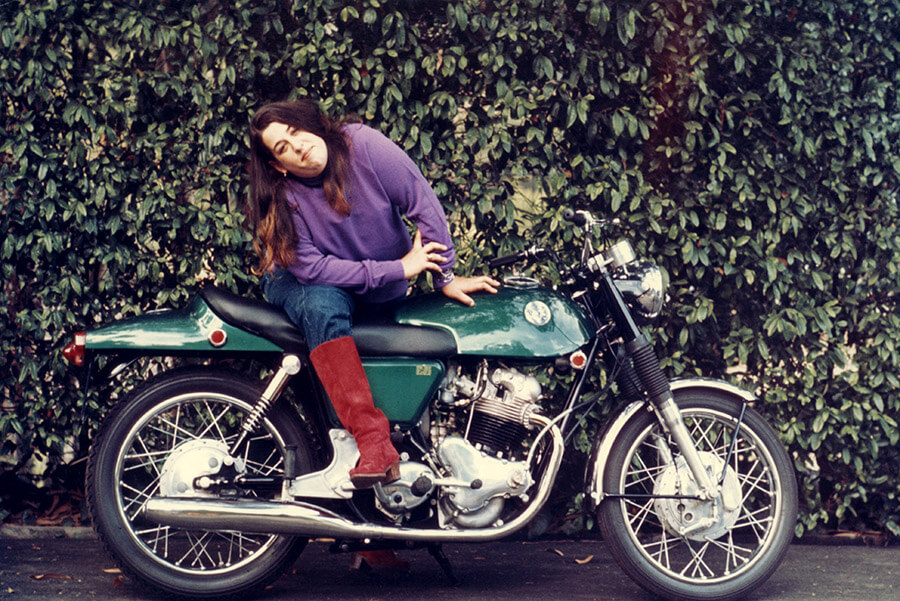







0 Comments